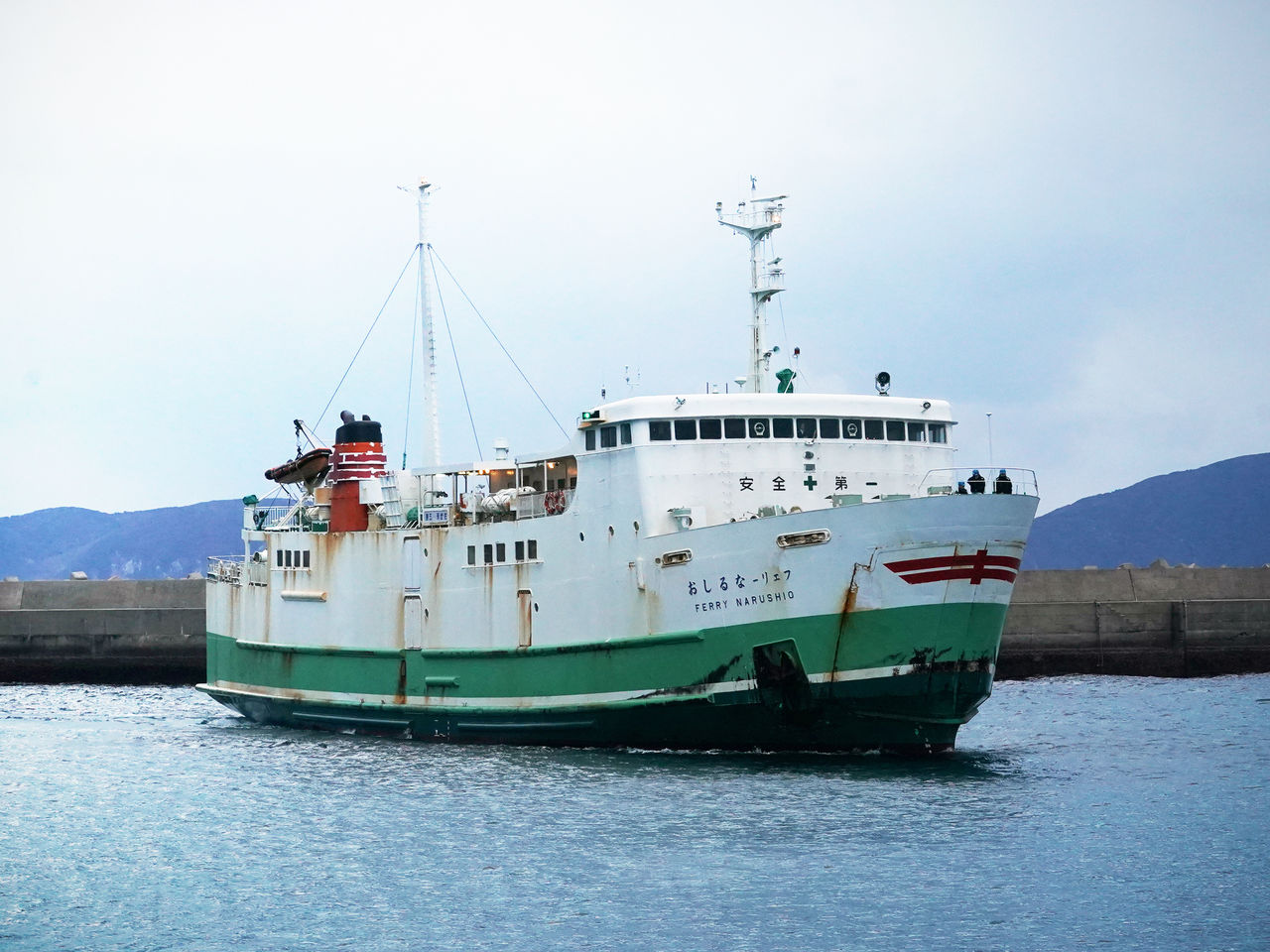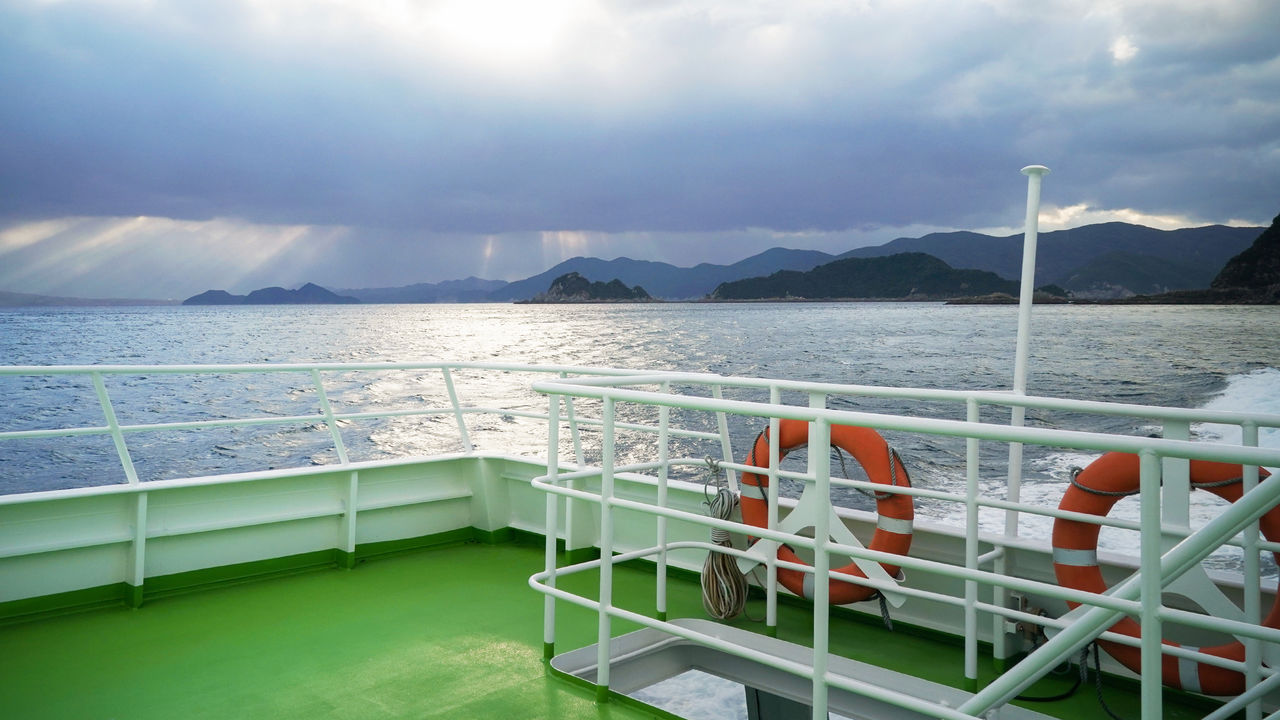
Touring Nagasaki’s Gotō Islands by Boat
Guideto Japan
- English
- 日本語
- 简体字
- 繁體字
- Français
- Español
- العربية
- Русский
About the Islands
The Gotō Islands, situated some 100 kilometers from Nagasaki Port on the westernmost edge of Kyūshū, Japan’s southernmost main island, are an archipelago of 140 islands, including several that are uninhabited. Virtually the whole chain is included in the Saikai National Park, a marine park famed for its beautiful island-dotted seascapes. Further attention has focused on the region lately with the inscription of the Hidden Christian Sites in the Nagasaki Region on the UNESCO World Heritage List in 2018.
Related article › Exploring Nagasaki’s Gotō Islands and the History of the Hidden Christians
 The former Nokubi Church, one of the sites inscribed on the UNESCO World Heritage List. There are around 50 Catholic churches scattered throughout the islands.
The former Nokubi Church, one of the sites inscribed on the UNESCO World Heritage List. There are around 50 Catholic churches scattered throughout the islands.
Administratively speaking, starting from the northern part of the island chain, Uku and Tera islands are part of the city of Sasebo. The town of Ojika consists of Ojika, Nozaki, and some smaller islands, and the islands Nakadōri, Kashira, and Wakamatsu constitute the town of Shin-Kamigotō. In the southern part, Fukue is the largest of the islands, and together with the islands of Hisaka and Naru makes up the city of Gotō. World Heritage sites are denoted not by individual site but by the islands or villages where they are found, which, going from north to south, are Nozaki, Kashira, the village of Egami on Naru, and Hisaka.
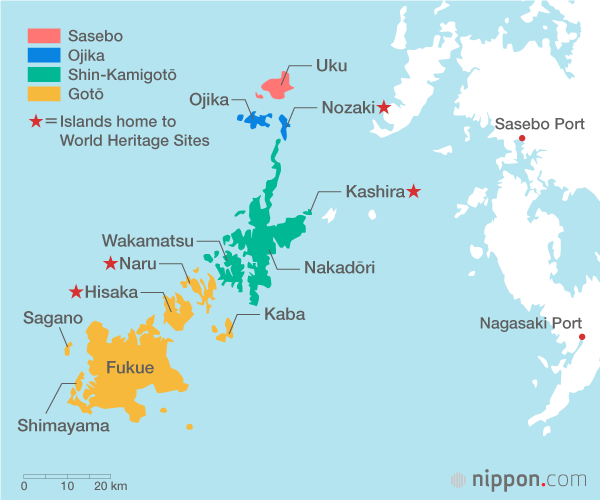 Fukue, the largest of the Gotō Islands, is where the majority of visitors head. In addition to the numerous churches that dot the island, it has plenty of other sightseeing attractions, including natural sites like the Ōsezaki cliffs and the Ondake volcanic range. Fukue can be reached by regularly scheduled flights from Fukuoka and Nagasaki, which fly into Fukue Airport, popularly known as Gotō Tsubaki Airport.
Fukue, the largest of the Gotō Islands, is where the majority of visitors head. In addition to the numerous churches that dot the island, it has plenty of other sightseeing attractions, including natural sites like the Ōsezaki cliffs and the Ondake volcanic range. Fukue can be reached by regularly scheduled flights from Fukuoka and Nagasaki, which fly into Fukue Airport, popularly known as Gotō Tsubaki Airport.
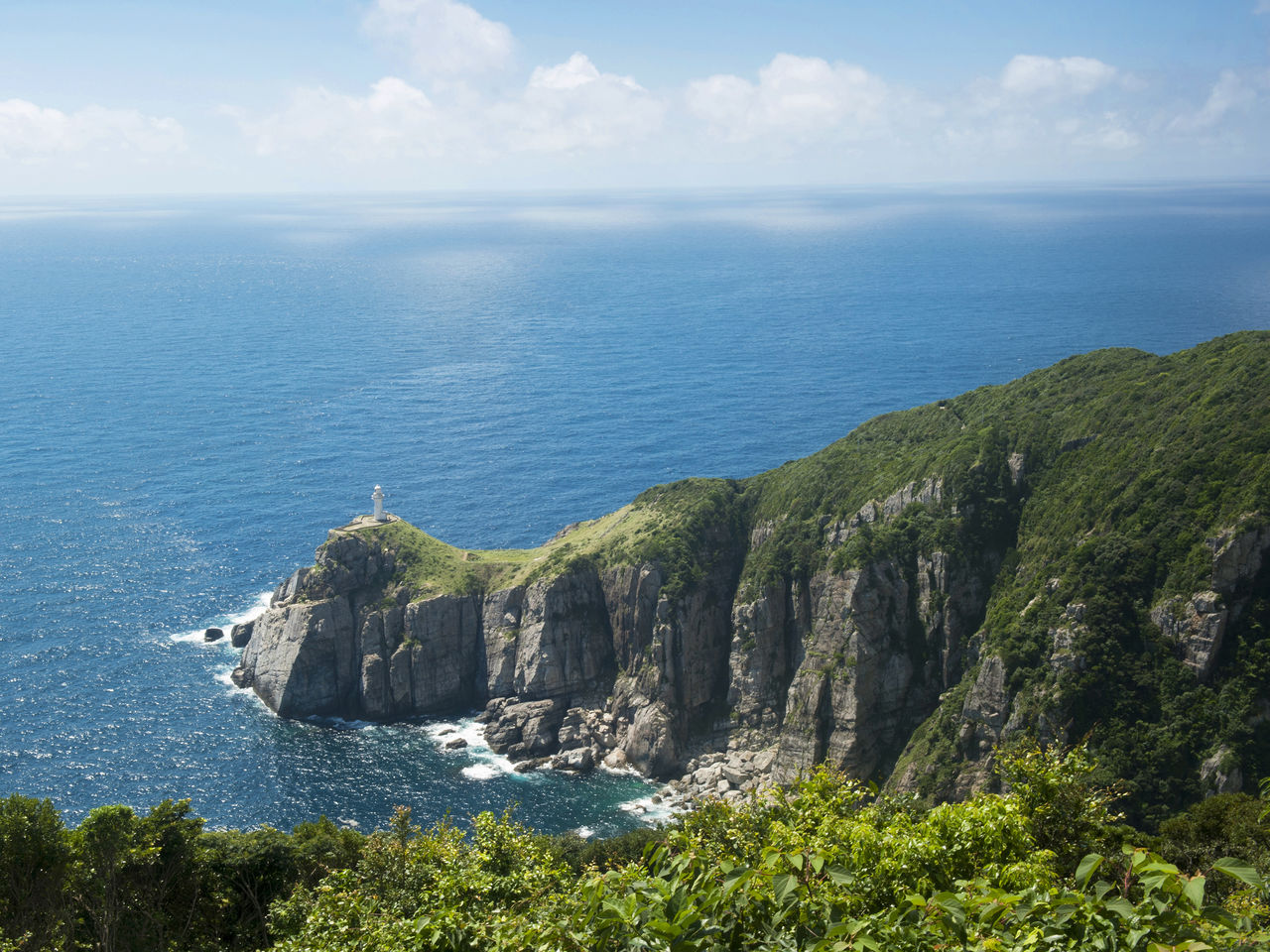 The Ōsezaki cliffs are a spectacular natural site on the Gotō Islands.
The Ōsezaki cliffs are a spectacular natural site on the Gotō Islands.
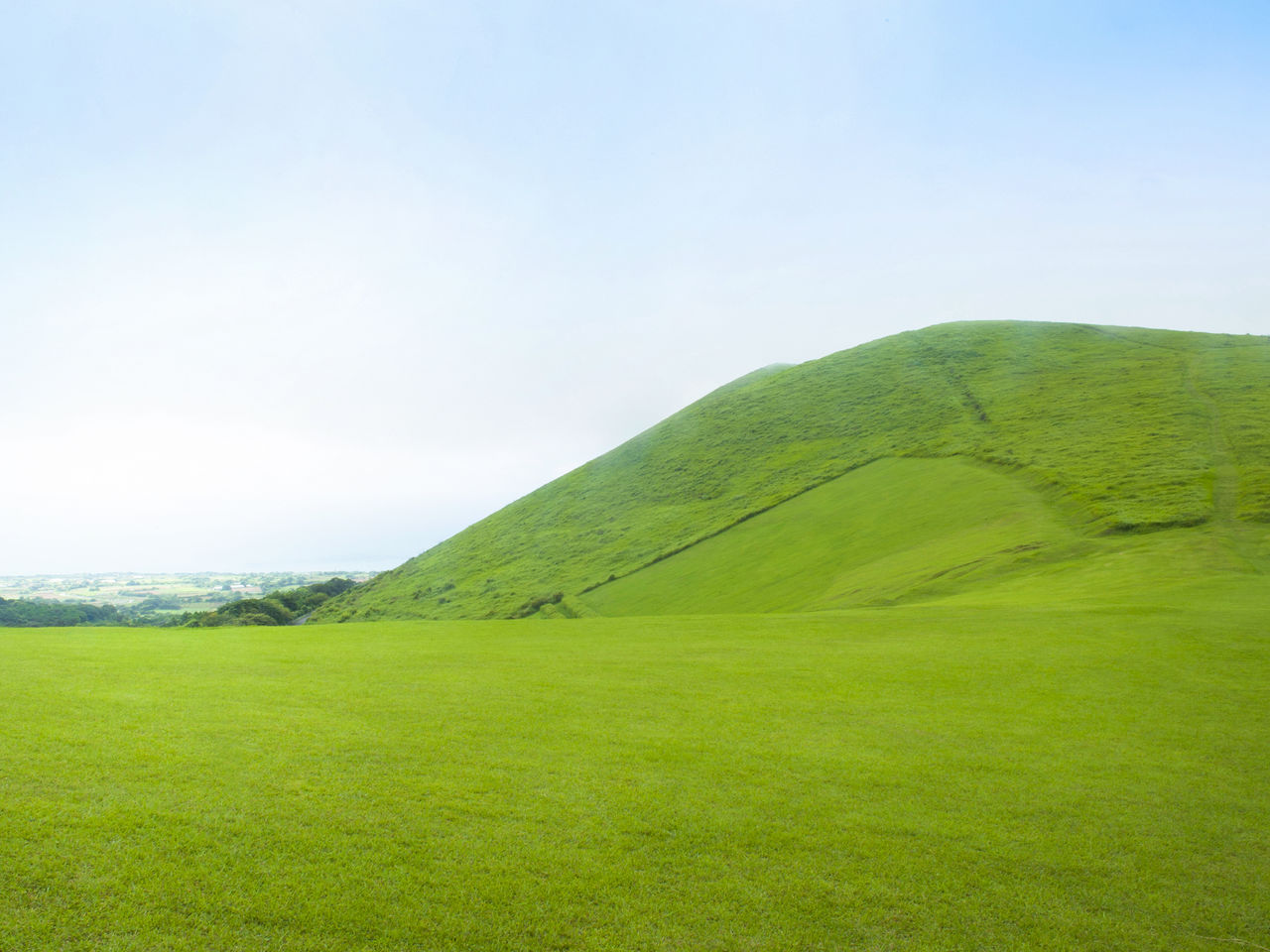 Ondake volcano—more of a grassy knoll than a rocky peak—is 15 minutes by car from Fukue Airport.
Ondake volcano—more of a grassy knoll than a rocky peak—is 15 minutes by car from Fukue Airport.
Visitors to Kamigotō in the north usually base themselves on Nakadōri, the second largest of the Gotō Islands. Bandake, the highest point in the island chain, offers beautiful views of numerous islands, and the red surfaces of the Akadaki cliffs contrasting with the deep blue of the ocean are a spectacular sight. The island Kashira, one of the World Heritage sites, can be visited easily by car via a bridge connecting it to Nakadōri.
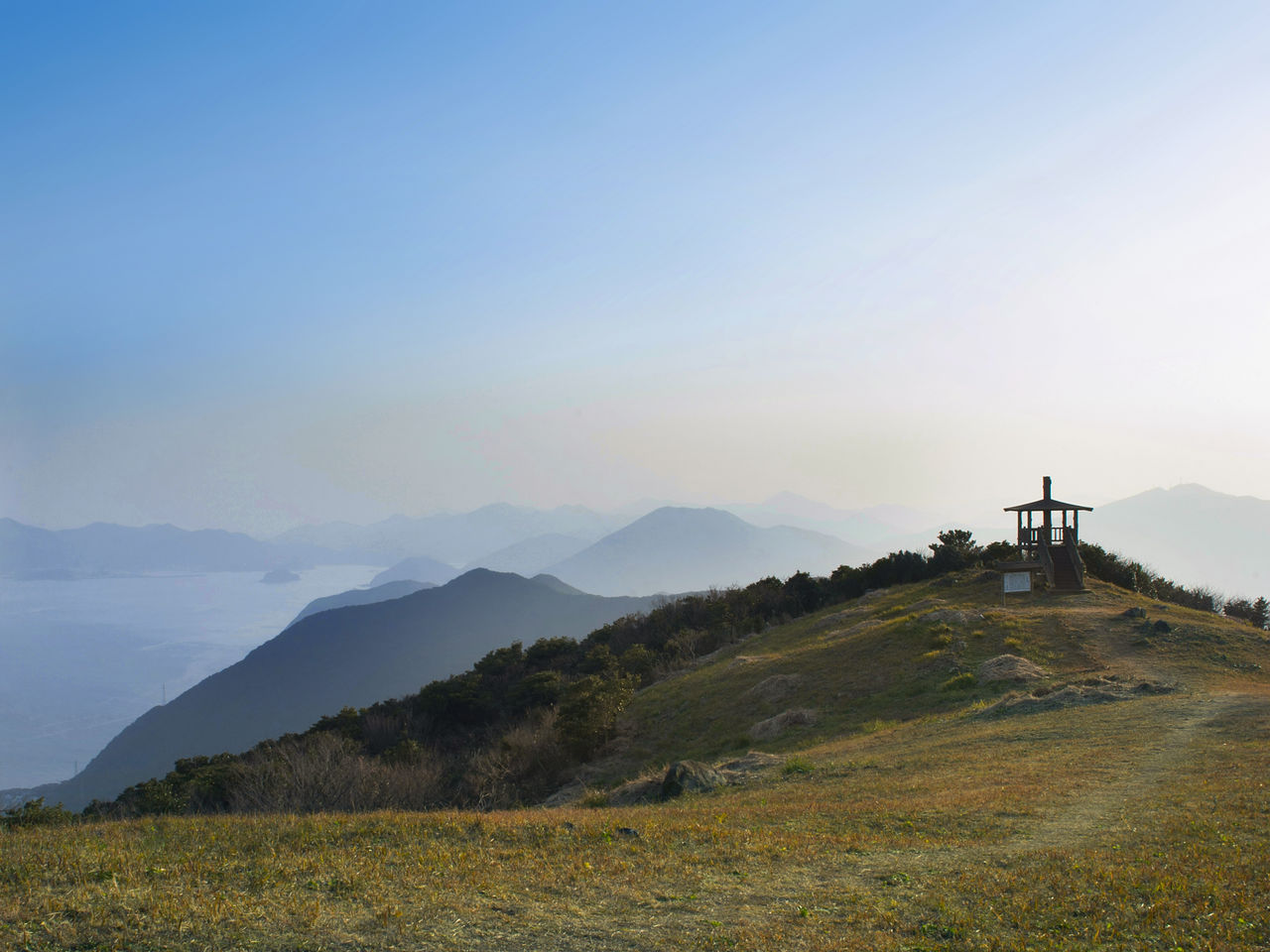 Beautiful views of numerous islands are visible from Bandake, the highest point on the Gotō Islands.
Beautiful views of numerous islands are visible from Bandake, the highest point on the Gotō Islands.
Related article › The Natural Beauty and Historic Churches of the Gotō Islands (Video)
Best Touring Route
The islands can be reached by air, but most people travel by ferry or high-speed jetfoil, which depart from various Kyūshū ports. Travel time and itinerary will vary depending on which method is used to get there. The three main options are described below.
1. Take the Overnight Ferry from Hakata
Nomo Shōsen operates the Taiko overnight ferry from Hakata Port to Fukue, with a few stops along the way. Hakata Port is just a 10-minute bus or taxi ride from Tenjin in central Hakata. Departure time is 11:45 pm, which leaves plenty of time to enjoy nighttime entertainment in Tenjin or Nakasu.
The ferry can be boarded starting at 9:45 pm, two hours before departure, which makes it convenient for families with children or those who aren’t interested in nightlife. Boarding early gives time to settle in and get a good night’s sleep in preparation for the next day’s sightseeing.
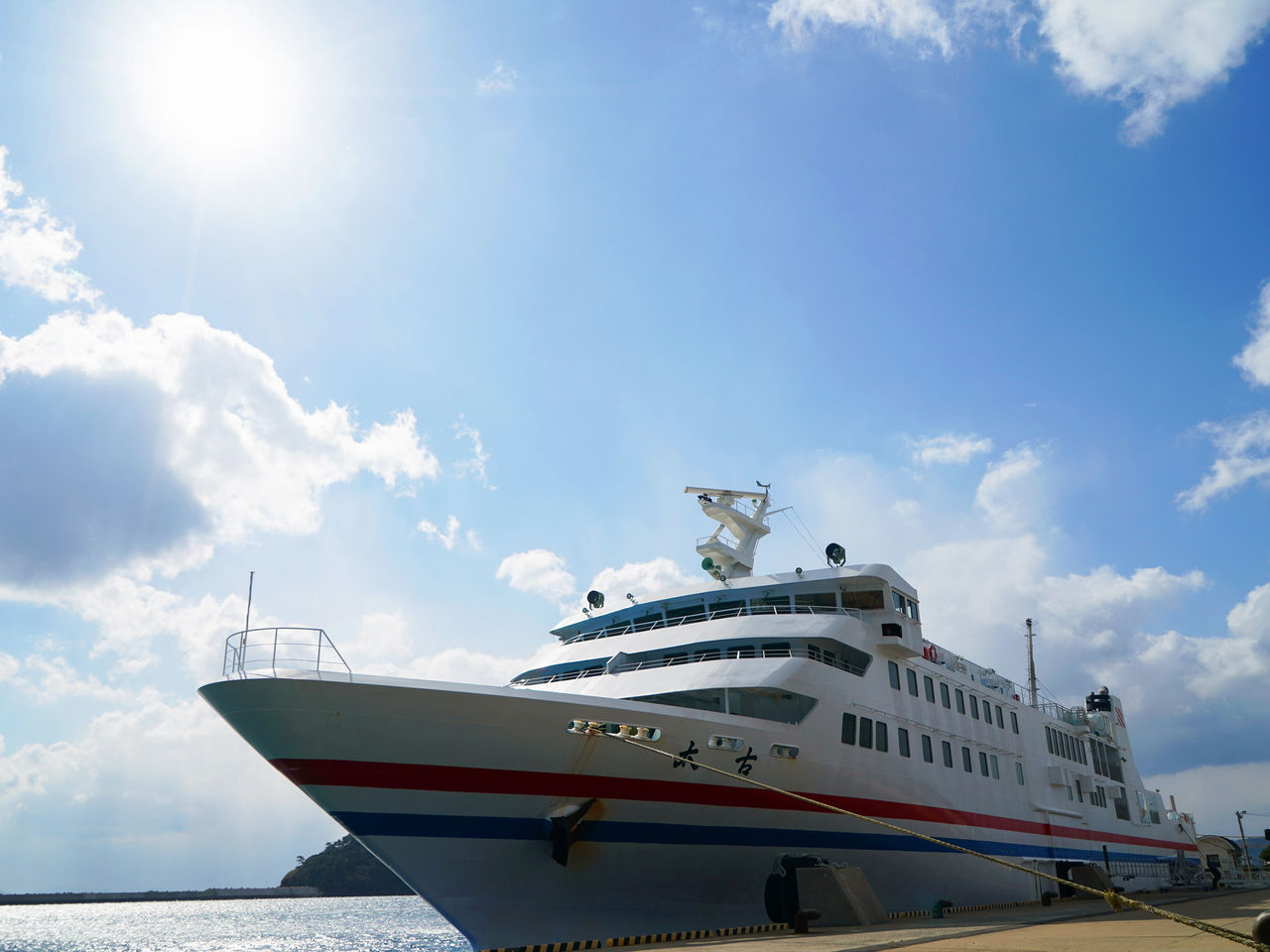 The Taiko overnight ferry connects Hakata with the Gotō Islands.
The Taiko overnight ferry connects Hakata with the Gotō Islands.
The ferry stops at four islands along the way: Uku (arrival time 3:55 am), Ojika (4:40 am), Nakadōri (5:40 am), and Naru (7:25 am), before reaching its final destination of Fukue at 8:15 am, making it a convenient way to island-hop. To make the voyage comfortable for everyone, the ferry amenities include a children’s play area and a relaxation room.
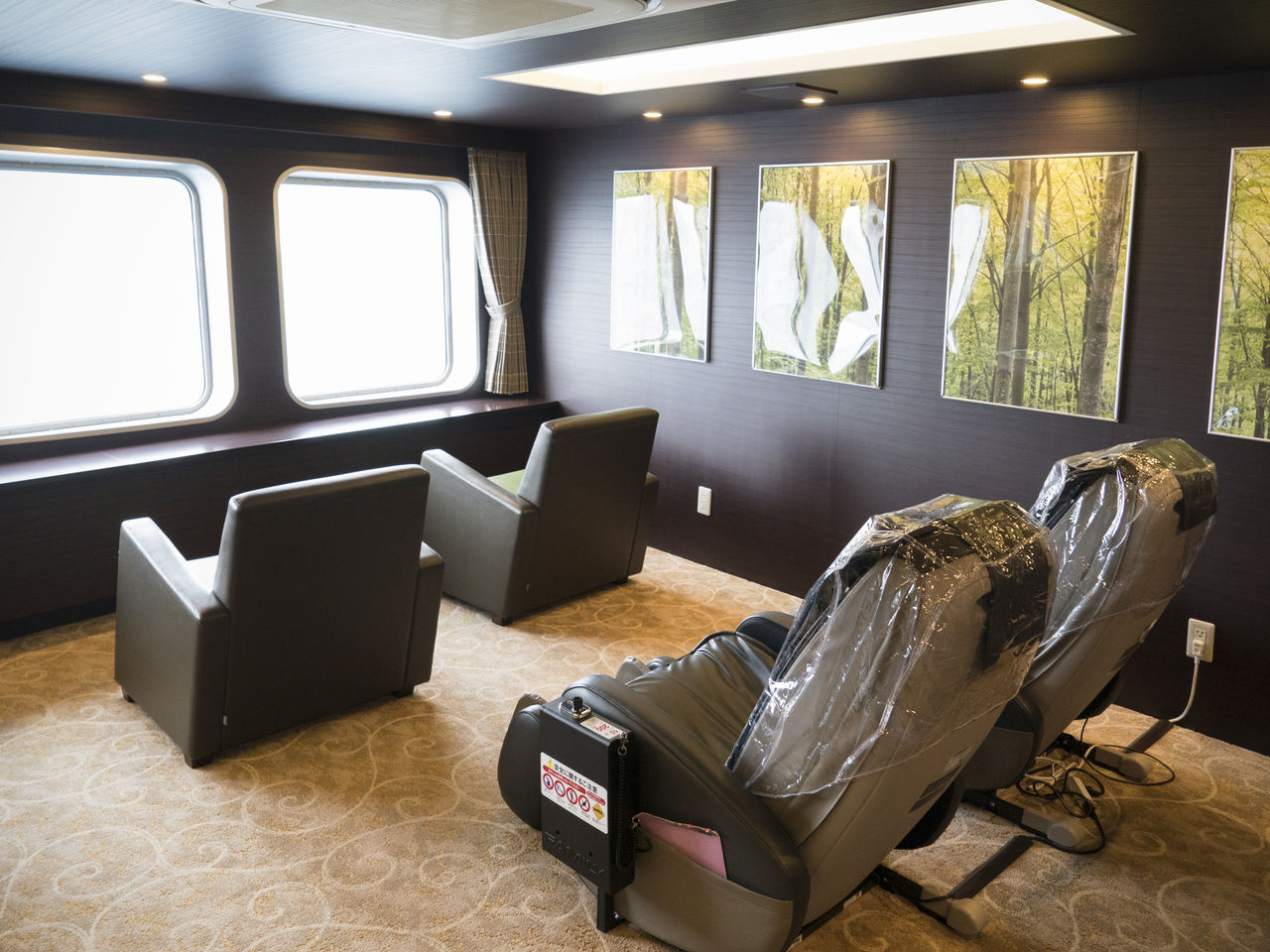 The relaxation room on the Taiko is equipped with massage chairs.
The relaxation room on the Taiko is equipped with massage chairs.
2. Tour World Heritage Sites from Nagasaki Port
Visitors wishing to tour Nagasaki’s Ōura Church, one of the sites included in the Hidden Christian Sites in the Nagasaki Region, should start their trip in Nagasaki. Nearby is the former Thomas Glover estate, included in the Sites of Japan’s Industrial Revolution, another World Heritage site. Thomas Glover was a Nagasaki-based Scottish businessman who played a key role in Japan’s industrialization prior to and during the Meiji period (1838–1911). The ferry departing from Nagasaki for the Gotō Islands passes by the giant cantilever crane at the Mitsubishi shipyards, a business whose predecessor Glover was instrumental in establishing. An additional suggestion is to visit Gunkanjima, the island home to the Hashima coal mine and another Meiji-era industrial site, which can be reached by tour boat leaving from a dock near the ferry boarding point.
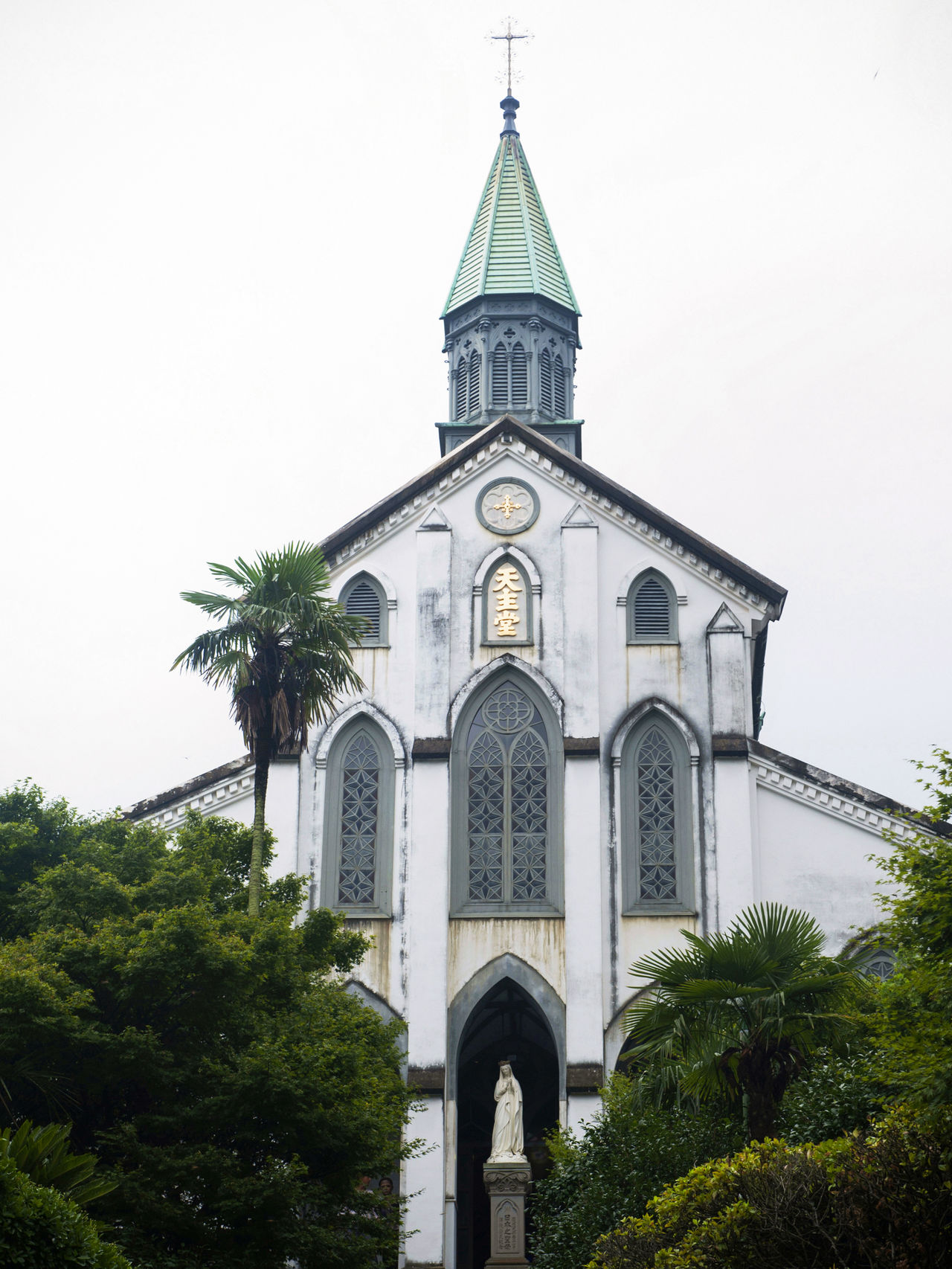 The Ōura Church, where “hidden Christians” revealed themselves in 1865.
The Ōura Church, where “hidden Christians” revealed themselves in 1865.
In addition to the ferry, Kyūshū Shōsen operates the Pegasus jetfoil, a waterjet-propelled hydrofoil out of Nagasaki port. The high-speed jetfoil reaches Fukue in about 90 minutes, compared to the 3-hour, 40-minute journey by ferry. This vessel is less affected by waves, making it perhaps the preferred mode of travel for those worried about seasickness.
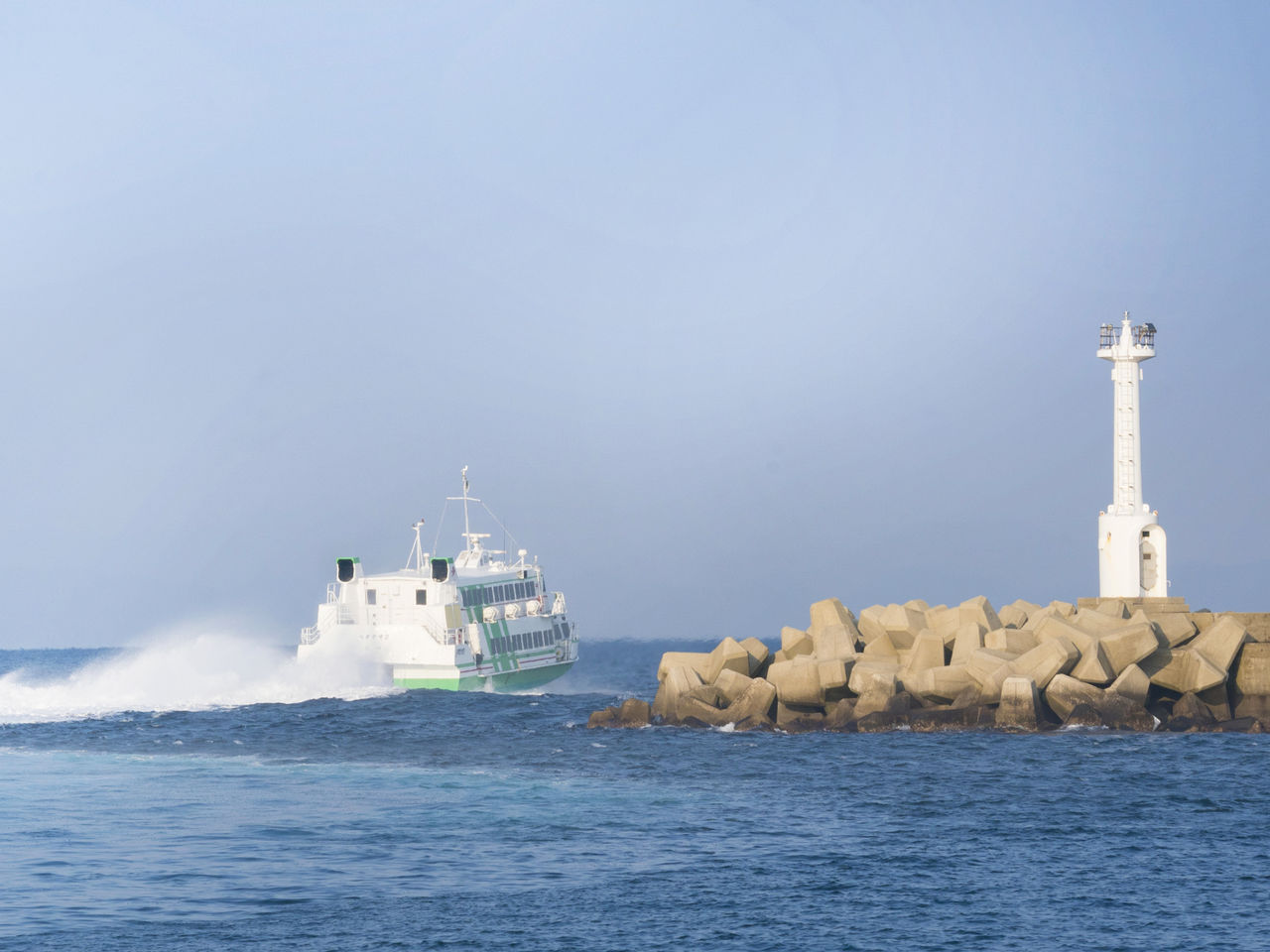 A jetfoil shoots across the water as though it’s flying.
A jetfoil shoots across the water as though it’s flying.
 The Pegasus offers a smooth, swift ride, but passengers must fasten seatbelts and cannot go out onto the deck.
The Pegasus offers a smooth, swift ride, but passengers must fasten seatbelts and cannot go out onto the deck.
3. Take a Ferry from Sasebo to Uku, Ojika, and Fukue
The Gotō Islands can also be reached from Sasebo, site of the Huis Ten Bosch (Dutch for “house in the woods”) theme park, which opened in 1992 to provide something of a taste of the Netherlands to visitors. Kyūshū Shōsen operates the Narushio, which calls at the northern islands of Uku and Ojika.
What to Know About Traveling by Ship
Weather often affects sea voyages, and runs may be cancelled if winds are too strong. It’s recommended to keep a close eye on the weather and operational status of the ferry or jetfoil you’re thinking of using, and to add an extra day to your itinerary in case sea transport is not operating normally. Jetfoils are quick but are more easily affected than ferries by high waves and strong winds, so you may find that travel by this mode may not go as planned.
Island-hopping is not always easy either, since runs between islands are infrequent, one or two a day at best. This part of the trip needs careful planning and thorough research on which ship to take or whether to use a water taxi between islands. Departure times are when boats actually leave the dock, so you may not be able to board if you cut things too close. It’s best to arrive at least 30 minutes before departure time, in order to have enough time to buy your ticket and board the ship.
For those worried about seasickness, riding in the rear is best, since the rear is more stable and rocks less than the front of the boat. On ships large enough for passengers to go on deck, venturing out is worth it for the beautiful views of the islet-dotted seas. Those views, combined with refreshing breaths of salt air, are one of the great pleasures of travel by sea.
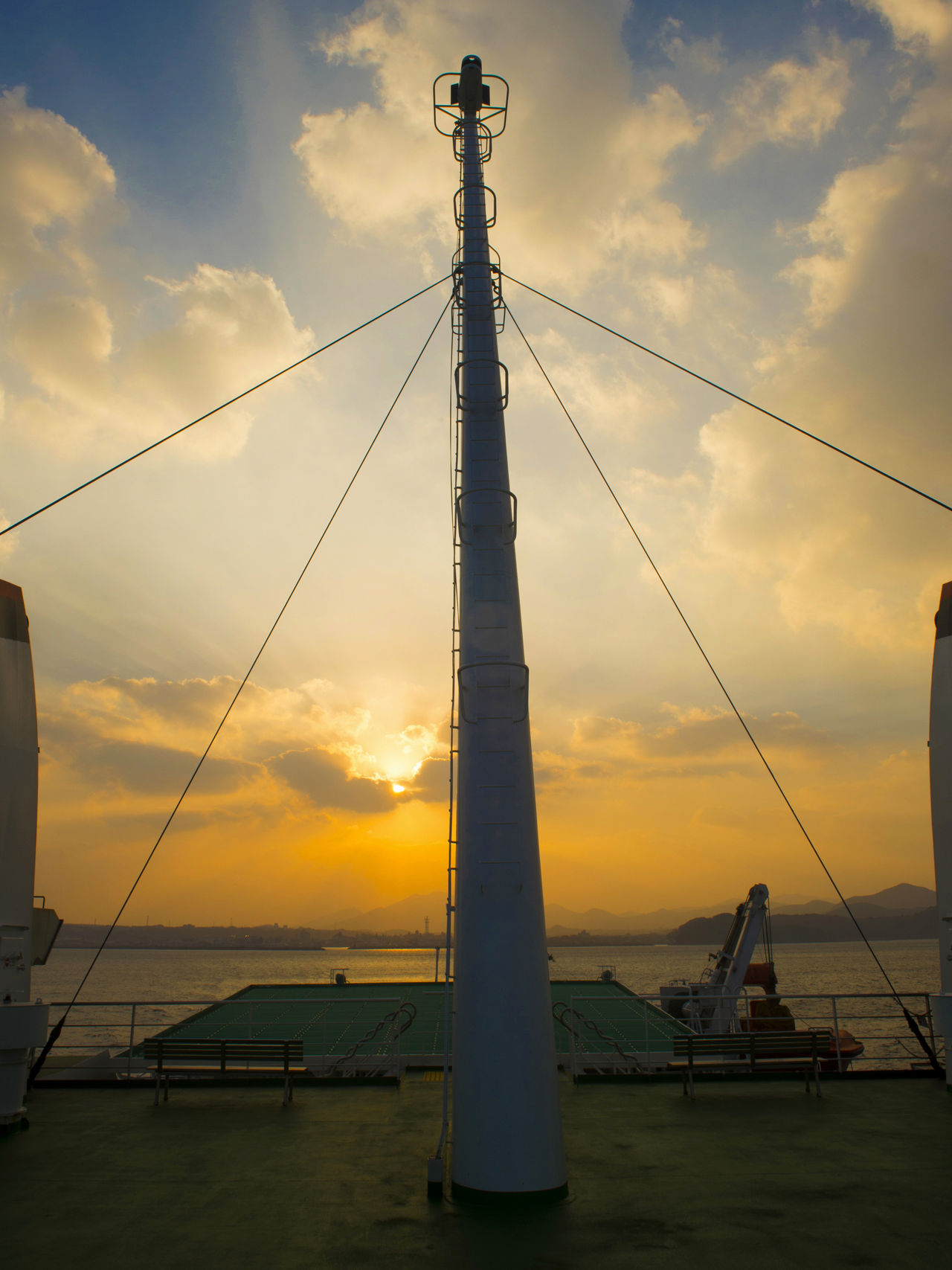 Sunset viewed from the deck of the Narushio, with islands slipping by as the ship goes on its way.
Sunset viewed from the deck of the Narushio, with islands slipping by as the ship goes on its way.
Cuisine and Festivals Rich in Local Color
Part of the fun of travel is enjoying culinary offerings. The Gotō Islands offer one of Japan’s “big three” udon thick wheat noodles, Gotō udon. Locally grown camellia oil is kneaded into the dough, yielding super-chewy noodles which are served in a broth based on ago, flying fish. The flavor is guaranteed to hit the spot, and restaurants serving Gotō udon can be found near the Fukue port terminal and elsewhere throughout the islands.
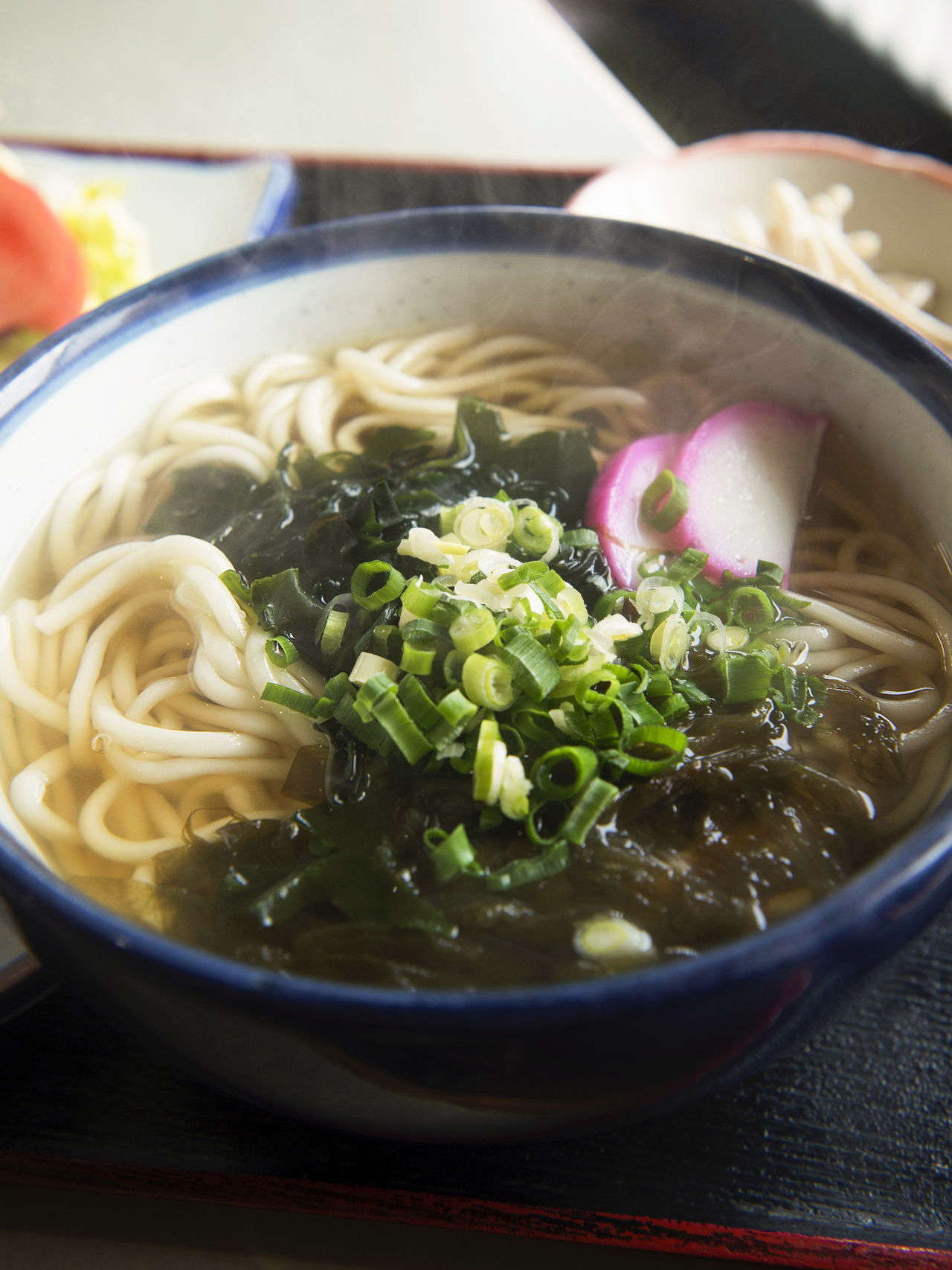 Gotō udon noodles contain camellia oil, which makes them very chewy.
Gotō udon noodles contain camellia oil, which makes them very chewy.
Seafood of all kinds is abundant too, and saba mackerel sushi is very popular. But in terms of impact, kattoppo, made from whole hakofugu boxfish, leads the pack. The fish carcass is used as a cooking vessel for its own flesh, which is mixed with miso, sake, and chopped long onion and returned to the fish for cooking. The resulting dish pairs well with rice; it also makes a great tidbit to savor with local shōchū spirits.
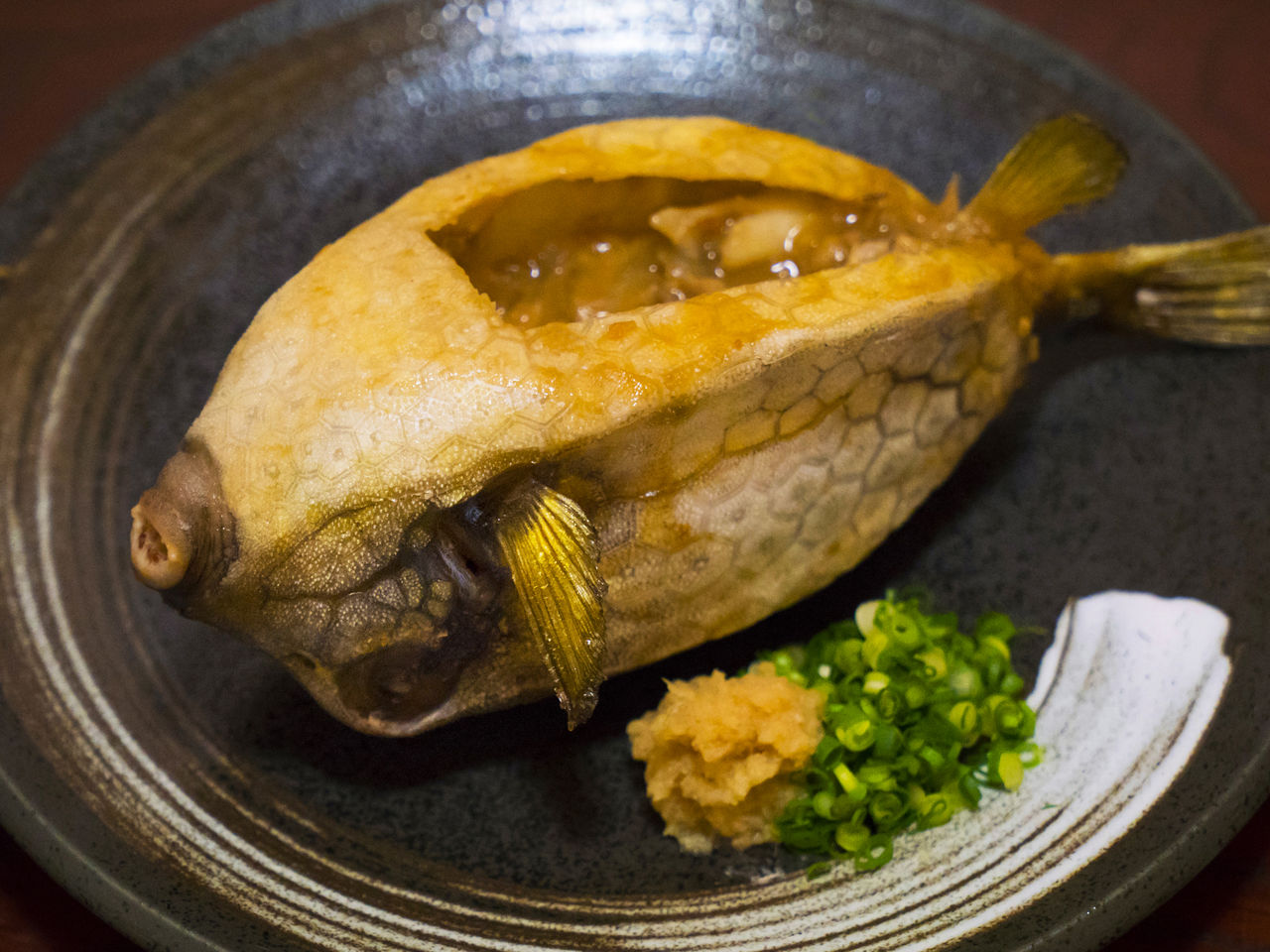 Kattoppo is a luxurious dish made using a whole hakofugu boxfish.
Kattoppo is a luxurious dish made using a whole hakofugu boxfish.
Folk festivals are another major attraction, so a visit when these events, some of them quite strange, take place can be very rewarding. One of the folk festivals, the Hetomato, held the third Sunday of January every year on Fukue, may be the most bizarre. The proceedings include dumping young women onto a giant straw sandal for a bumpy ride as the sandal is paraded through the streets by the strongest men on the island, and daubing participants and spectators alike with soot, which supposedly ensures good health for the coming year.
At the nenbutsu-odori sutra dances performed during the summer to mark the Obon festival of the dead, the clothing, music, and dances differ from one location to another. Each district has its own particular name for the dances—chankoko on Fukue, ōmondē on Sagano, and oneonde on Tomie. They all have their unique charms, and it’s worth going from place to place to see as many of these dances as possible.
Related article › Nagasaki’s Gotō Islands: A Treasure House of Unique Festivals and Natural Beauty
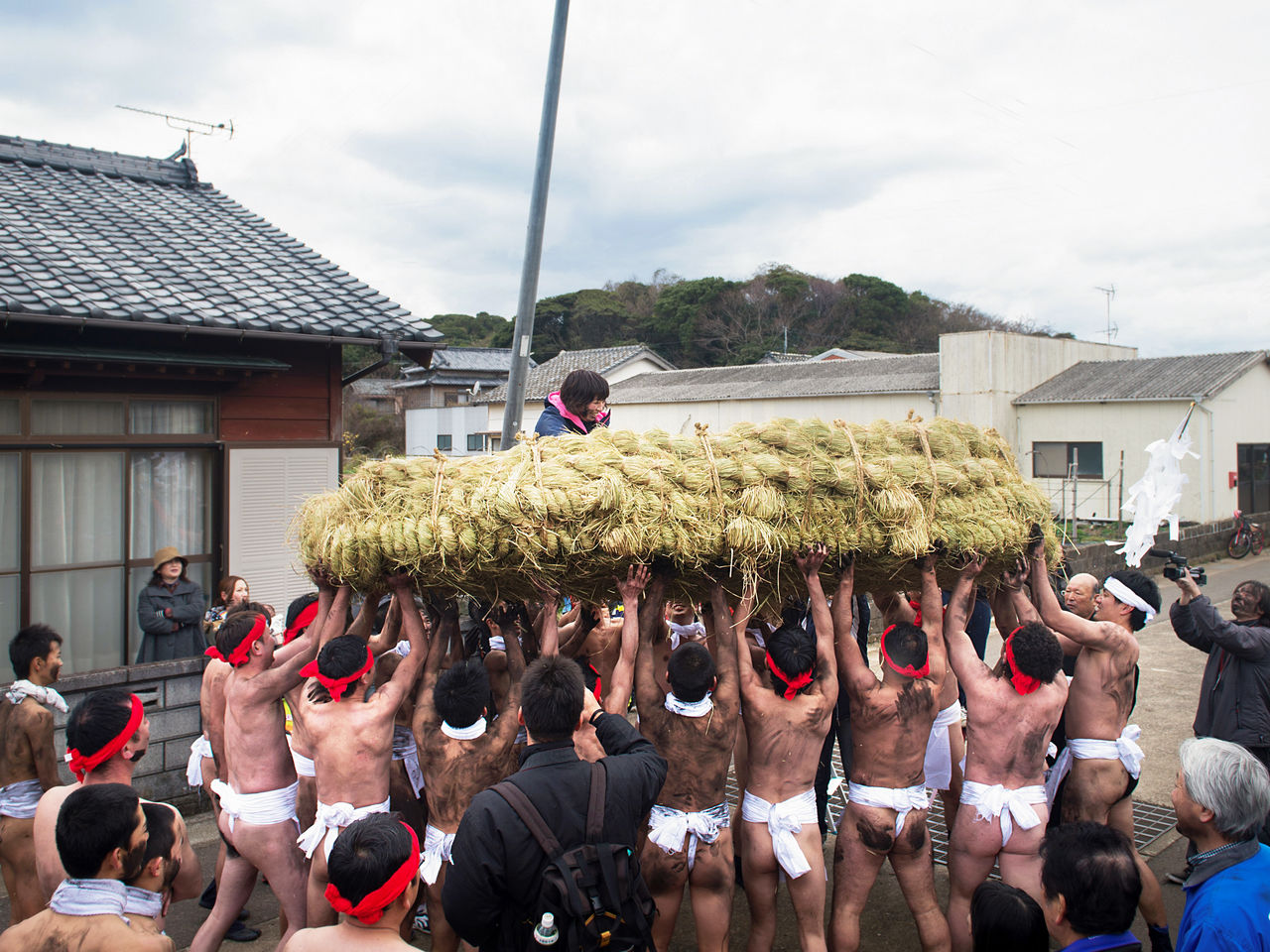 The origins of the Hetomato Festival, celebrated here in the Shimosakiyama district on Fukue, are lost in the mists of time.
The origins of the Hetomato Festival, celebrated here in the Shimosakiyama district on Fukue, are lost in the mists of time.
As far as ground transportation is concerned, the larger islands have bus service, but runs are infrequent. This makes it difficult for visitors to get where they want to go efficiently, so using a rented vehicle or a taxi is advisable. The Gotō Islands are such a treasure trove of nature, culture, history, and cuisine that visitors should do their best to see and experience as much of them as they can.
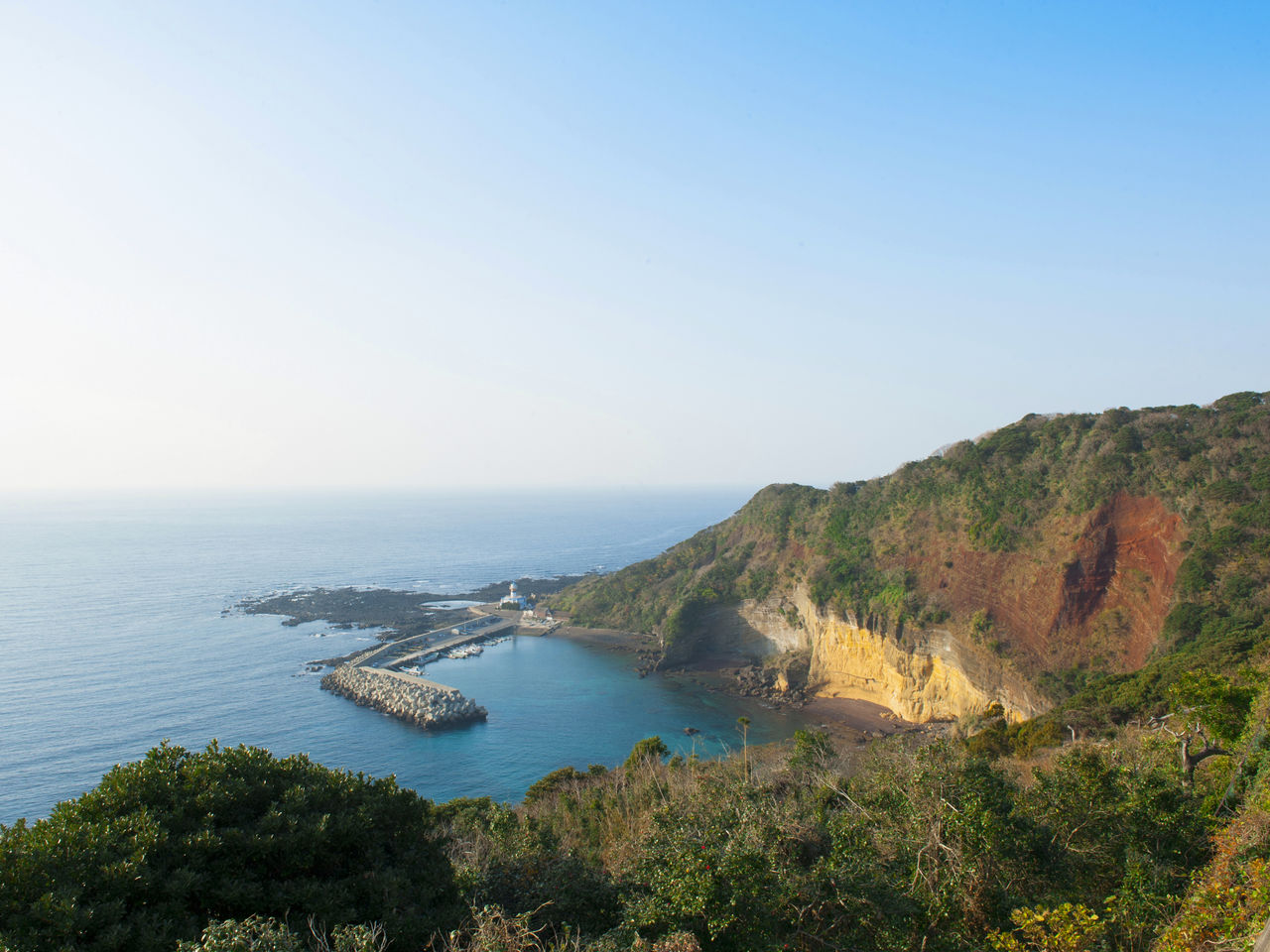 The red cliffs of Akatagi on Nakadōri contrast beautifully with the deep blue sea.
The red cliffs of Akatagi on Nakadōri contrast beautifully with the deep blue sea.
(Originally published in Japanese on September 27, 2018. Text by Fujii Kazuyuki; photos by Kuroiwa Masakazu, 96Box. Banner photo: Out on the deck of the Narushio in the salt air, with the Gotō Islands up ahead.)
tourism World Heritage food church festival island Kyūshū Gotō Nagasaki
